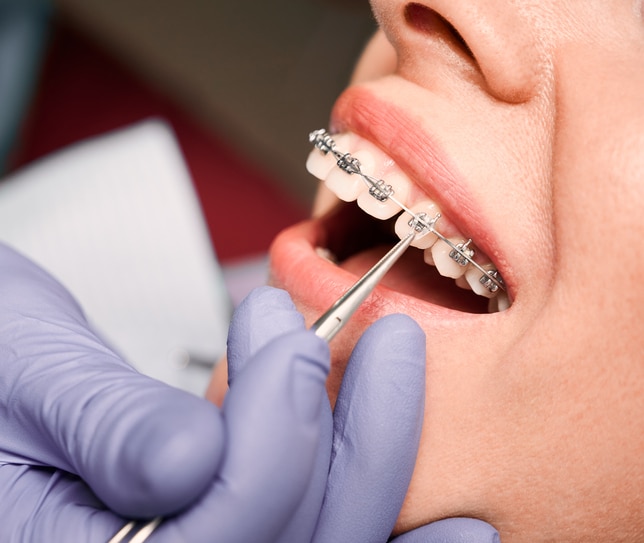Professional Cumming Braces and Aligners: What to Know Prior To You Go to
Professional Cumming Braces and Aligners: What to Know Prior To You Go to
Blog Article
Comprehensive Overview to Orthodontics Procedures for Fixing Dental Imbalances
Comprehending the complexities of each procedure, including their devices, advantages, and potential drawbacks, is crucial in making notified choices about one's orthodontic treatment. As we navigate via the comprehensive guide to orthodontic treatments for correcting oral misalignments, the complex details of each approach will certainly unfold, losing light on the course toward a practical and harmonious dental placement.
Orthodontic Procedures Summary

Along with clear aligners and conventional dental braces, orthodontists might also recommend various other treatments like headgear, palatal expanders, or retainers to resolve specific positioning issues (aligners). These procedures are customized to each patient's distinct needs and might entail a combination of therapies to achieve the wanted results. Regular changes and tracking are essential components of orthodontic therapy to make sure development is on track and to make any kind of necessary modifications along the road. By undergoing orthodontic procedures, clients can not only accomplish a straighter smile however also improve their overall dental health and wellness and function.
Traditional Braces: Exactly How They Function
When taking into consideration orthodontic treatments for oral misalignments, standard dental braces stand out as a time-tested approach for remedying teeth positioning. Standard dental braces are composed of brackets, cords, and bands that work with each other to use continuous pressure on the teeth, slowly relocating them right into the wanted alignment.
As pressure is applied to the teeth via the braces, the bone bordering the teeth is improved to sustain the new tooth positions. People will certainly require normal adjustments at the orthodontist's office to ensure the braces continue to use the right pressure for effective teeth movement.
Invisible Aligners: Advantages And Disadvantages
Undetectable aligners supply a practical and very discreet option to standard braces for remedying oral misalignments. These clear, tailor-made trays are basically unseen when worn, making them an attractive alternative for people looking for a more visually pleasing orthodontic therapy. Among the primary benefits of undetectable aligners is their removability, enabling for simpler upkeep of oral hygiene contrasted to traditional dental braces. Clients can eliminate the aligners before consuming or brushing their teeth, reducing the risk of food obtaining stuck in the appliance and simplifying the cleansing procedure.

Surgical Orthodontic Options
Surgical interventions in orthodontics existing sensible options for addressing complex oral imbalances that might not be effectively solved with conventional orthodontic treatments. While typical dental braces and invisible aligners can deal with many orthodontic concerns, particular situations need medical intervention to accomplish optimum results. Surgical orthodontic choices are usually suggested for severe malocclusions, significant jaw disparities, and cases where the underlying bone structure needs modification to achieve proper positioning.
One usual surgical orthodontic treatment is orthognathic surgery, which includes rearranging the jaws to fix useful problems such as problem talking or eating. This surgery is usually performed in collaboration with an orthodontist that assists line up the teeth prior to and after the treatment. Surgical orthodontics might additionally entail treatments to expose impacted teeth, get rid of excess gum tissue, or improve the jawbone to create an extra unified facial account.
Before taking into consideration medical orthodontic alternatives, patients go through a thorough examination to establish the requirement and potential benefits of such interventions. invisalign. While surgery might appear challenging, it can considerably boost both the function and aesthetics of the smile in instances where conventional orthodontic treatments fall short
Retainers and Post-Treatment Care

Post-treatment treatment involves complying with the orthodontist's guidelines vigilantly. This may include appropriate dental hygiene techniques, participating in follow-up visits, and wearing the retainers as prescribed. Failing to abide by post-treatment care directions can result in regression, where the teeth progressively return towards their initial placements. Constant retainer wear, excellent oral hygiene, and routine dental exams are crucial for maintaining the results accomplished through orthodontic surgical procedure and guaranteeing the lasting security of the corrected dental placement.
Verdict
In verdict, orthodontic procedures offer numerous choices for correcting oral imbalances. Surgical orthodontic alternatives are offered for more severe imbalances. Generally, orthodontic treatments can efficiently boost oral health and visual appearance.
As we navigate with the extensive overview to orthodontic treatments for correcting dental imbalances, the complex information of each method will certainly unfold, losing light on the course Continue towards a practical and harmonious oral alignment. - cumming aligners
One of the most usual orthodontic therapies is the use of dental braces, which are composed of steel braces and cords that use mild pressure to slowly change teeth into the desired setting.When thinking about orthodontic treatments for dental misalignments, conventional dental braces stand out as a time-tested method for dealing with teeth placing. In addition, invisible aligners might not be suitable for complicated orthodontic issues that call for more substantial teeth movement, as they are typically advised for light to modest cases. Retainers are customized orthodontic devices designed to hold teeth in their corrected settings after the completion of orthodontic therapy.
Report this page